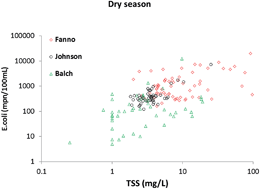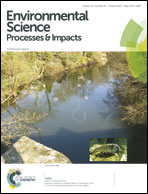Response of discharge, TSS, and E. coli to rainfall events in urban, suburban, and rural watersheds
Abstract
Understanding dominant processes influencing microorganism responses to storm events aids in the development of effective management controls on pathogen contamination in surface water so that they are suitable for water supply, recreation, and aquatic habitat. Despite the urgent needs at present, numerous facets of microbial transport and fate are still poorly understood. Using correlation and multiple regression combined with spatial analyses, this paper evaluates the relationship between antecedent precipitation and discharge, TSS, and E. coli concentrations, and examines correlations between E. coli and TSS, as well as whether and how those relationships change along an urban and rural gradient. The urban watershed exhibited a faster and stronger response of streamflow, TSS, and E. coli to precipitation mainly due to its higher degree of imperviousness. In general, TSS was significantly correlated with E. coli concentrations, which linearly decreased as % developed area increased, with large variation in regions with a high percentage of development, implying the more complex stormwater infrastructure and more variable pollutant sources of E. coli in the urban watershed. Seasonal differences for E. coli were noted. Specifically, summer showed a higher level of E. coli, which might be attributed to the higher temperature since E. coli is more likely to persist and grow in a warmer environment. Further multiple linear regression analyses showed the best E. coli prediction result for the largest, suburban watershed, using antecedent precipitation, TSS, and temperature as independent variables. The models are capable of explaining 60% and 50% of the variability in the E. coli concentration for the dry and wet season, respectively. The study not only provides more detailed and accurate characterization of the storm-period response of E. coli across an urban and rural gradient, but also lays a foundation for predicting the concentration of E. coli in practice, potentially suggesting effective watershed management decisions.


 Please wait while we load your content...
Please wait while we load your content...